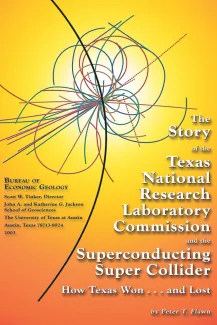
Publication Details
Get the Publication
$12.00
Abstract/Description:
"When in the early 1980’s it became known that the Federal Government was planning to undertake the construction of the massive Superconducting Super Collider (SSC) project, scientists in the various states, still without precise information on the criteria to be established for site selection, began to seek ways in which they, and their states, could participate in the project. In Texas, there was early interest by a group of physicists in securing a role in the design and construction of the magnets, and there was interest in identifying a site or sites that would be competitive in the national competition that was to be announced. The “Texas group,” without as yet any formal State organization, came together in January of 1983 through a university consortium formed by the presidents of The University of Texas at Austin, Texas A&M University, the University of Houston, and Rice University, who acted in response to expressed interest by members of their faculties. At the time, I was President of The University of Texas at Austin. The other presidents in 1983 were Frank Vandiver (Texas A&M University), Richard Van Horn (University of Houston), and Norman Hackerman (Rice University). The faculty leadership included professors Steven Weinberg of The University of Texas at Austin, Peter M. McIntyre of Texas A&M University, Roy Weinstein of the University of Houston, and Gerald Phillips of Rice University. Professor Sheldon Glashow of Harvard University, a visiting professor at both Texas A&M and Houston, was also part of the effort. The university consortium evolved into two groups—the “magnet group” and 2 The Story of the TNRLC and the SSC the “site-evaluation group.” At that time, all of the universities in the consortium were members of the Houston Area Research Center (HARC), which undertook to coordinate the university efforts."